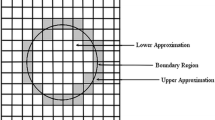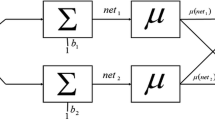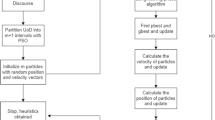Abstract
In this paper we present a new approach on optimal forecasting by using the fuzzy set theory and soft computing methods for the dynamic data analysis. This research is based on the concepts of fuzzy membership function as well as the natural selection of evolution theory. Some discussions in the sensitivity of the design of fuzzy processing will be provided. Through the design of genetic evolution, the AIC criteria is used as the adjust function, and the fuzzy memberships function of each gene model are calculated. Simulation and empirical examples show that our proposed forecasting technique can give an optimal forecasting in time series analysis.
Similar content being viewed by others
References
Brown, R., J. Dubin, and J. Evans. (1975). “Techniques for Testing the Constancy of Regression Relationships Over Time,” Journal of the Royal Statistical Society, Ser. B, 37, 149–163.
Holland, J. H. (1975). Adaptation in Natural and Artificial Systems. Ann Arbor: University of Michigan Press.
Inclan, C. and G. C. Tiao. (1994). “Use of Cumulative Sums of Squares for Retrospective Detection of Changes of Variance,” Journal of the American Statistical Association 89(427), 913–924.
Nguyen, H. and M. Sugeno. (1998). Fuzzy Modeling and Control. CRC Press.
Rukhin, A. (1997). “Change-Point Estimation under Asymmetric Loss,” Statistics & Decisions 15, 141–163.
Saatri, T., B. Flores, and J. Valdes. (1989). “Detecting Points of Change in Time Series,” Computers Open Res 16, 271–293.
Wu, B. and M. Chen. (1999). “Use Fuzzy Statistical Methods in Change Periods Detection,” Applied Mathematics and Computation 99, 241–254.
Wu, B. and C. Chung. (2002). “Using Genetic Algorithms to Parameters (d, r) Estimation for Threshold Autoregressive Models,” Computational Statistics and Data Analysis 38, 315–330.
Author information
Authors and Affiliations
Rights and permissions
About this article
Cite this article
Chen, SR., Wu, B. On Optimal Forecasting with Soft Computation for Nonlinear Time Series. Fuzzy Optimization and Decision Making 2, 215–228 (2003). https://doi.org/10.1023/A:1025090420345
Issue Date:
DOI: https://doi.org/10.1023/A:1025090420345




